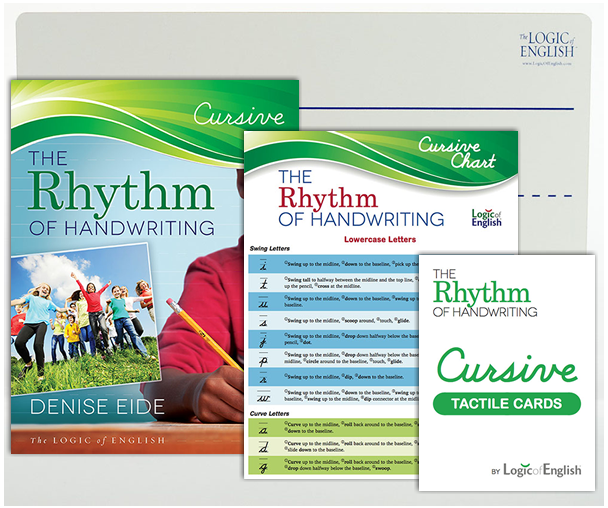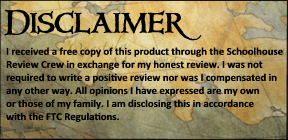We received this for review purposes!
Product Links: Essentials 2nd Edition
Vendor Information Link: Logic of English
Age Appeal: ages seven and up
Format: student workbook, hardback teacher’s book, flash cards
Price: Please visit the website for current prices and options.
Are you looking for a comprehensive language curriculum for your family? Logic of English Essentials Second Edition, Volume 1, could be exactly what you’re looking for. Essentials covers reading, spelling, phonics, fluency, grammar, and vocabulary.
In this volume there are 15 weekly lessons, which are divided into five lessons per week. The set includes:
- Essentials Teacher’s Guide, Volume 1
- Consumable Student Workbook, Volume 1
- Consumable Spelling Journal
- Spelling Analysis Card
- Phonogram and Spelling Rule Quick Reference
- Morpheme Cards, Set 1
- Spelling Rule Flash Cards
- Grammar Flash Cards
- Basic and Advanced Phonogram Flash Cards
- Phonogram Game Cards: Bookface and Manuscript or Cursive
- Phonogram Game Tiles
Our Experience:
B and C have some problems spelling, because we have yet to find the program that works best for them. I was excited to try using the second edition of Essentials.
It was a little overwhelming when the box came in the mail. But after looking at the Teacher’s Guide, I understood everything and it was easy to teach the children. The lessons were completely written out, so I couldn’t make a mistake teaching.
The weekly lessons were divided into five days of fun.
- Day One has “Essential Concepts” with new phonograms, exploring sounds, and new spelling rules.
- Day Two has “Building Words” with review, spelling analysis, and spelling journal.
- Day Three has “Words in Context” with review, grammar, and dictation.
- Day Four has “Words in Action” with review, vocabulary, dictation, reading, and composition.
- Day Five has “Check Your Understanding” with basic review and great review to make sure all concepts and words have been learned.
Each lesson has three different levels, so I had B and C each work on level two. It was challenging for C and good review for B. I wanted both of them to have a solid foundation. Each day’s activities took a while, but I felt they were getting a solid spelling foundation.
Mama’s Thoughts:
- This is a great program. I really appreciated the all of the detail in the teacher’s book. It told me everything I needed to do to teach the children. We have a busy life, so it was nice having a program all done for me.
- B and C enjoyed the different games. One of their favorite things to do was making words with the Phonogram Game Tiles. They made their names, phrases, and spelling words.
- I thought each daily lesson took too long (around 45 minutes) for B and C. They were used to lessons that took around 15 minutes.
- I know that the lessons took a long time, but I think that all of the concepts that are learned are really important. It’s important to learn the spelling rules and the different phonograms. If children learn these concepts when they are younger, they will be consistantly strong spellers when they are older.
- I like how each of the weekly lessons has three different levels. This makes this program great for families who have children at different levels.
B’s Thoughts (boy, age 12, officially in sixth grade):
Logic of English Essentials was not my favorite way to learn how to spell. Each daily lesson took approximately 45 minutes, which was way too long for me. I liked the games, like Phonogram Bingo. I liked making words with the Phonogram Game Tiles. I spelled my name and "I love reading." I liked the "Plurals Practice." For example, it was fun figuring out if the picture showed bag or bags.
I wouldn't recommend it to people who learn better with short lessons.
C’s Thoughts (girl, age 10, officially in fourth grade):
I liked the Phonogram Game Tiles. The teacher's book has instructions for sections that the student book doesn't have. l liked the Phonogram Bingo game and the other games. I liked the compound words, they were fun to do!
I think this product would be good for kids my age and youger.
Dad’s Thoughts:
Dad was not available.
Mama recommends to your homeschooling family!
Social Media Links!
Facebook: https://www.facebook.com/TheLogicOfEnglish/ YouTube: https://www.youtube.com/user/LogicofEnglish
Pinterest: https://www.pinterest.com/logicofenglish/














